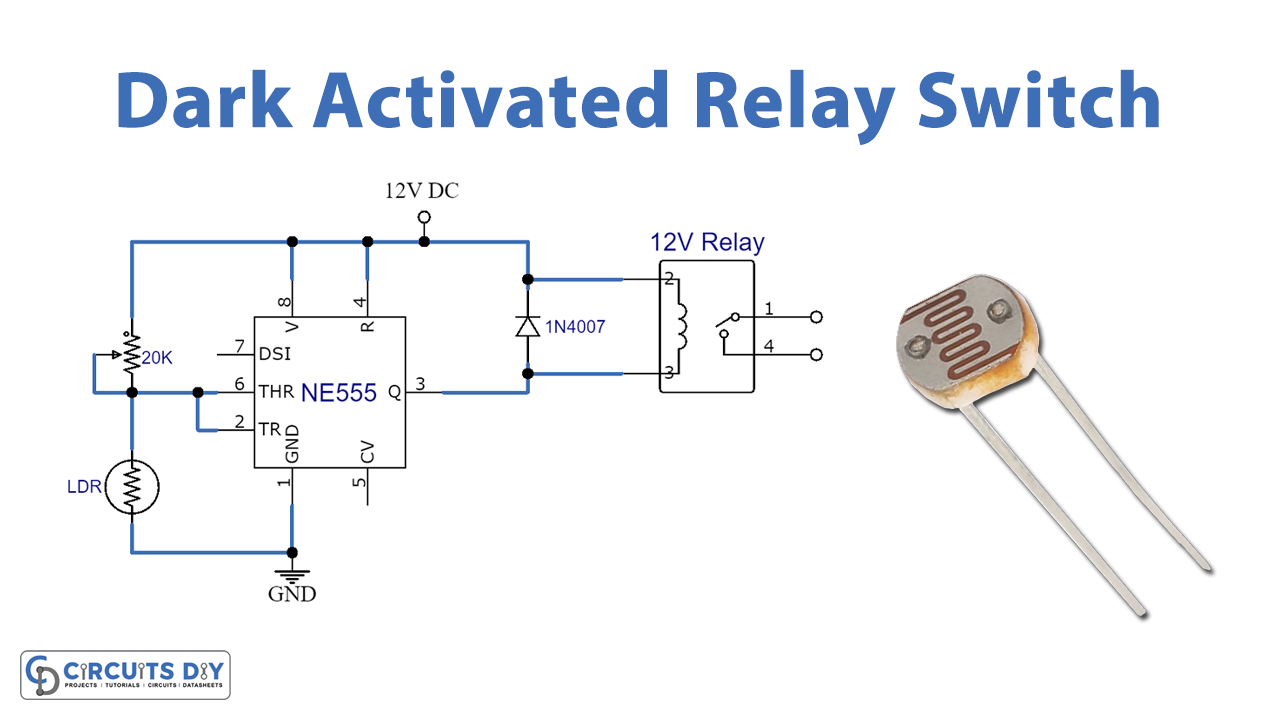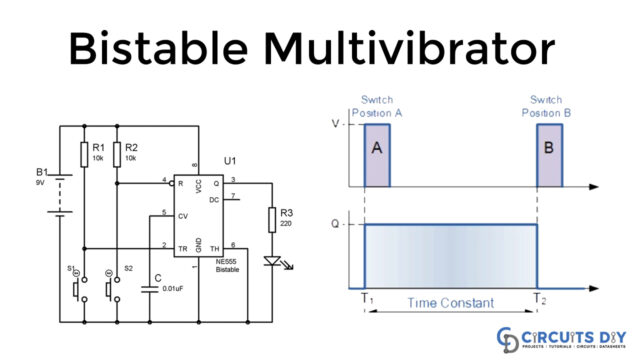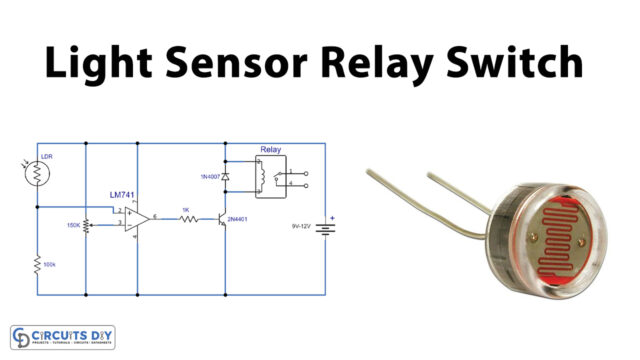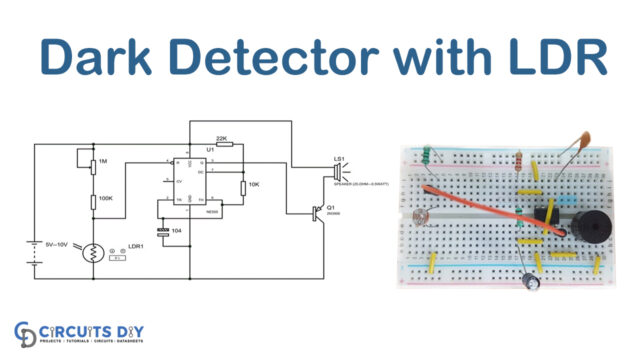The dark activated relay switch is an electrical system that automatically turns on when there is no light and is disabled in the daytime. At night the darkly activated switch would turn a relay on to power an AC light and it stays on until the light goes dark.
An LDR ( Light Dependent Resistor )is used in the circuit that has a resistance that varies with the light strength coming upon it. There are many uses of light-dependent resistors but one of the most apparent uses for an LDR is to transform a light on automatically at a certain amount of light.

Hardware Components
The following components are required to make Dark Activated Relay Circuit
| S.no | Components | Value | Qty |
|---|---|---|---|
| 1. | Potentiometer | 20K | 1 |
| 2. | LDR | – | 1 |
| 3. | IC | NE555 Timer | 1 |
| 4. | DC supply | – | 1 |
| 5. | Relays | 12V | 1 |
| 6. | Diode | 1N4007 | 1 |
NE555 IC Pinout

For a detailed description of pinout, dimension features, and specifications download the datasheet of 555 Timer
Dark Activated Relay Circuit
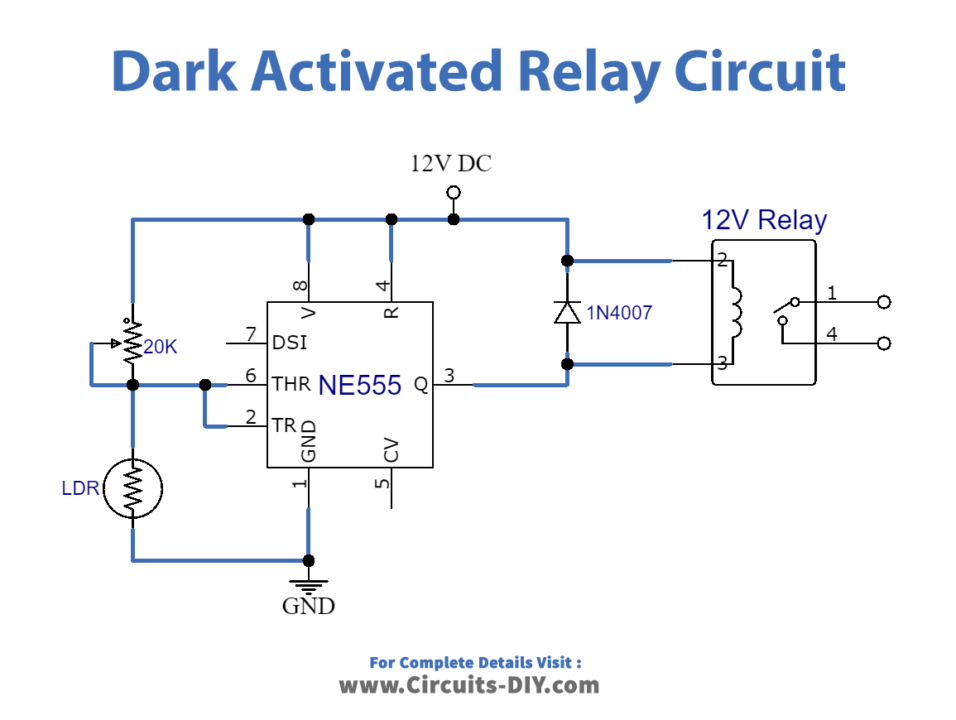
Working Explanation
This circuit is fairly simple and can only be supplied by 6 to 9 volts but the relay value used in the circuit should be the same as the source value. The circuit also includes a 20K potentiometer, with which you can change the intensity of dark/light you choose to turn on or off. This has an LDR, as well. An LDR or photoresistor is a tool that decreases resistance as light falls on the surface. Nearly all dark and light sensors circuits use LDR to detect light but some circuits do use solar panels to sense light such as automated electric garden lights. IC NE555 is used to create a very effective dark detection circuit within the system.
Applications and Uses
It is used to operate a relay Ac lamp at sunset.


